
— Sam Charlwood
750kg
It takes a certain degree of humility to admit you’ve fallen short of expectations in today’s ultra-competitive new car landscape. So imagine the boardroom meetings at Mazda that led to the second fix for its CX-60 mid-size SUV in the space of 18 months.
When the CX-60 first hit showrooms in 2023, the buying public and motoring press alike admonished it as too expensive and unresolved in its ride and handling mix, with firm suspension and heavy steering making it overly sporty for a family SUV.
In hindsight, the issues were partly a symptom of the COVID-19 pandemic’s forced lockdowns, which wreaked havoc in the human-centric development process. Within months, Mazda had delivered a purported fix – yet most problems persisted.
That brings us to the 2025 Mazda CX-60. Breakthrough underbody changes include softer springs at the rear and firmer shock absorber settings, plus the car maker claims it has remedied its predecessor’s transmission shunting. Add to that massive price cuts and the introduction of two new grades and you have wholesale changes which move the CX-60 in the right direction. But has Mazda truly smoothed out its rough edges?
As part of the 2025 model year updates, the Mazda CX-60 is cheaper than before. Much cheaper.
In fact, the base price of $50,240 plus on-road costs is some $10,560 less than the version it replaces. At the time of writing, most states are launching with a $53,990 drive away offer.
That’s for a new entry grade known as the CX-60 Pure, fitted with the base 3.3-litre six-cylinder petrol engine. The same grade with a 3.3-litre six-cylinder diesel engine adds a $2000 premium, while the flagship 2.5-litre four-cylinder petrol plug-in hybrid model imposes a hefty $13,050 charge.
The five-grade CX-60 range then moves through Evolve, Touring, GT and Azami guises, the latter topping out at between $68,440 plus ORCs and $81,490 plus ORCs depending on engine choice.
At those prices, the CX-60 moves away from its predecessor’s premium positioning – which faced it off with European rivals such as the BMW X3 – and aligns it more closely with the new Volkswagen Tiguan (from $44,990 plus ORCs), Skoda Kodiaq (from $56,990 drive away) and even the Lexus NX ($63,400 plus ORCs), to name a few.
For comparison, the slightly smaller Mazda CX-5 (which uses one of Mazda’s more conventional SUV underpinnings rather than its coveted large SUV platform) starts from $36,740 plus ORCs.
The Mazda CX-60 affirms its quasi-premium positioning with quality materials, soft contact points and flush surface gaps all around the cabin.
It’s a fairly comfortable place to spend time, yet offers proportions commensurate with a young family’s needs, including a 477-litre litre boot area (big enough to swallow a couple of full-size suitcases).
What feels less premium on entry grades is the fitment of cloth seats, manual front seat adjustment, manual steering wheel adjustment and a manual tailgate. Granted, you could argue this aligns with the base positioning, but $50k is still a lot of money.
A 10.25-inch central infotainment display graces Pure, Evolve and Touring model grades and continues to be operated by a clunky rotary dial instead of simple touch commands. The GT and Azami upgrade to a 12.3-inch centre display which uses touch-screen functionality much better suited to smartphone mirroring.
Less cumbersome is the spread of physical switchgear underneath, offering quick access to climate control, as well as a traditional volume knob for audio.
The top three trim levels get a separate 12.3-inch display within the instrument cluster, which conveys key driving information lacks an ability to display maps. A head-up display on all grades helps streamline the driving experience, too.
Finally, the second row offers adequate leg room, shoulder room and head room, as well as rear air vents and split-folding seats. The space is suitable for little ones or a couple of adults on moderate journeys – though narrow door apertures and a high-set window line mean it isn’t as accommodating as some rivals.
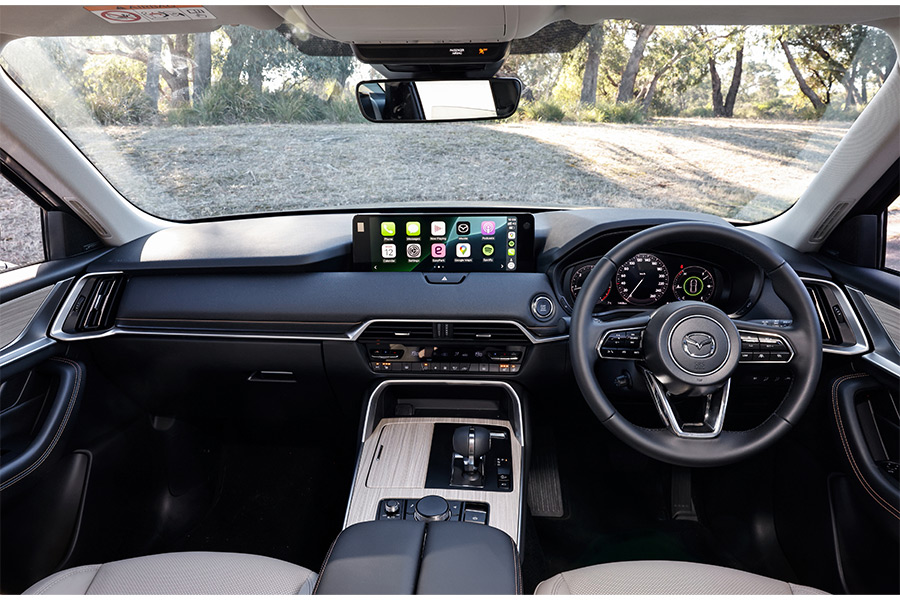
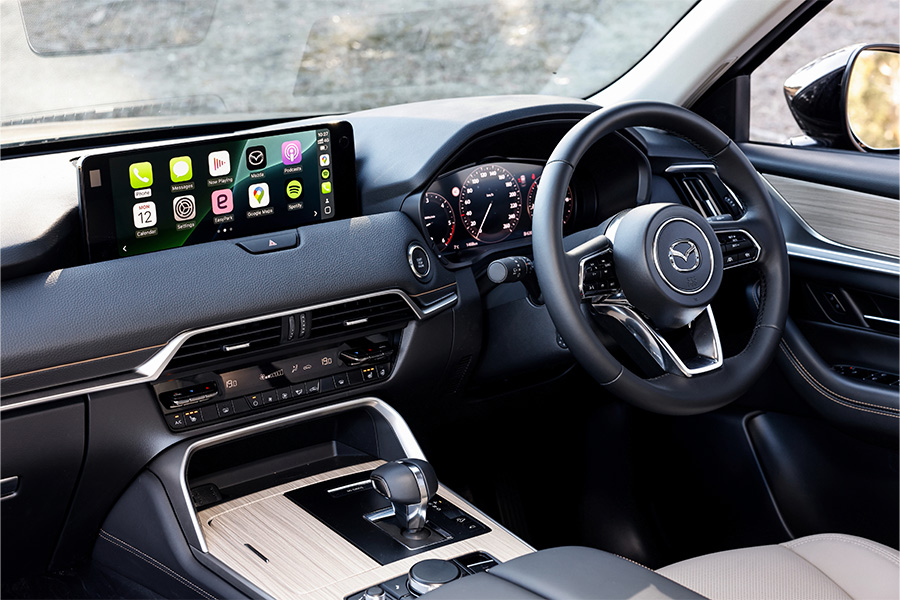
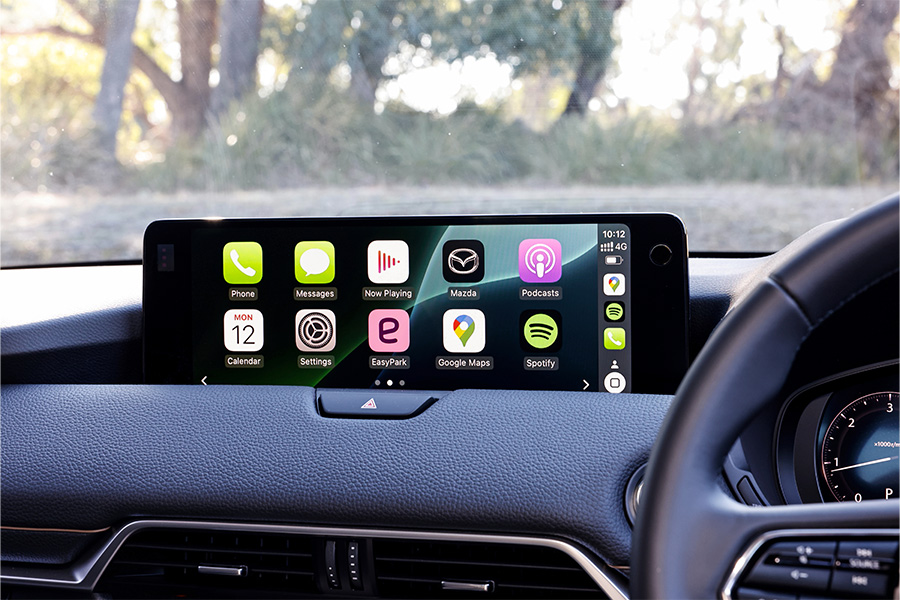
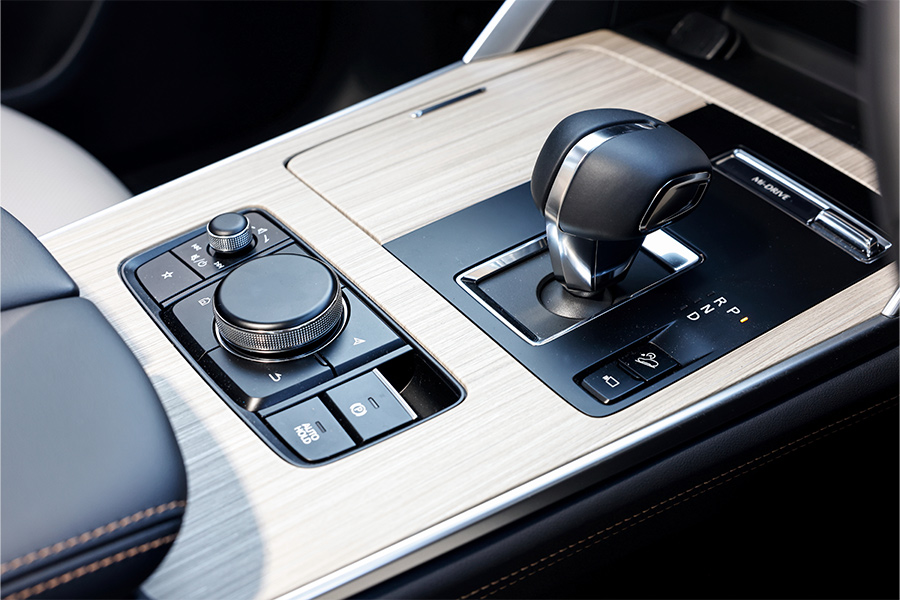
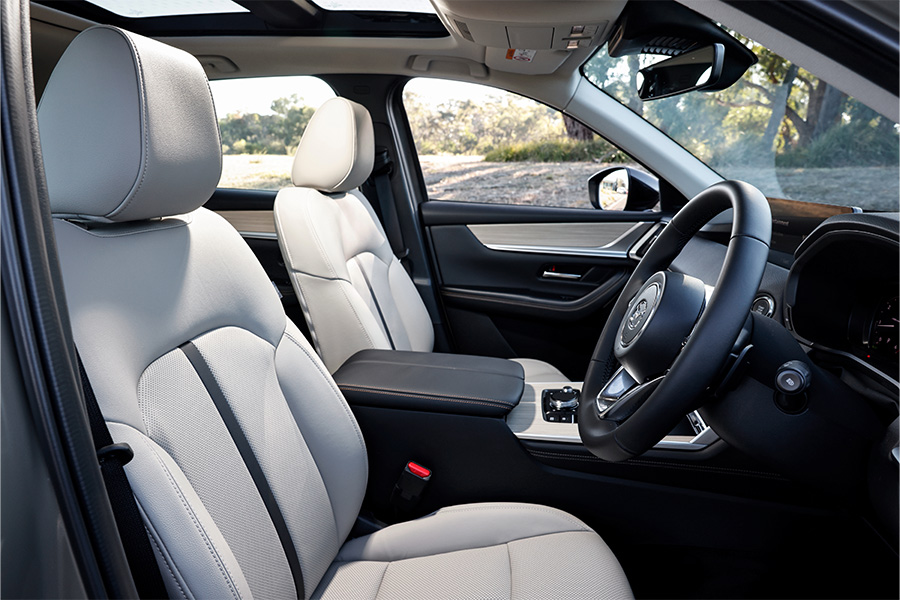
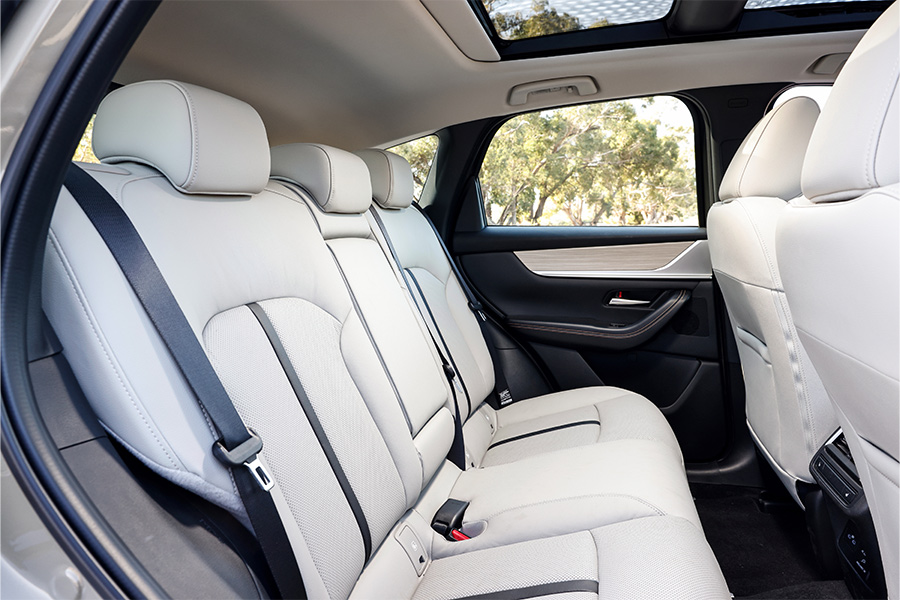
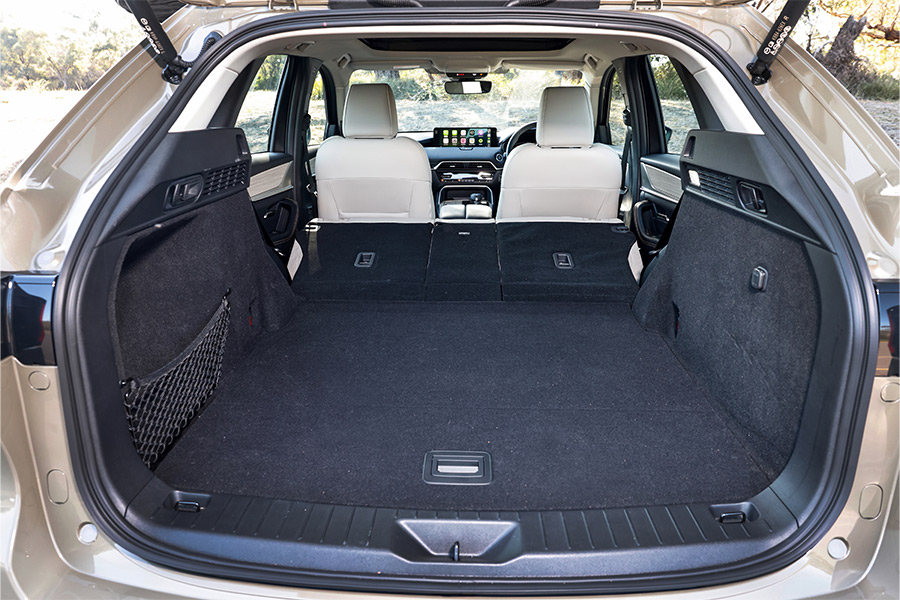

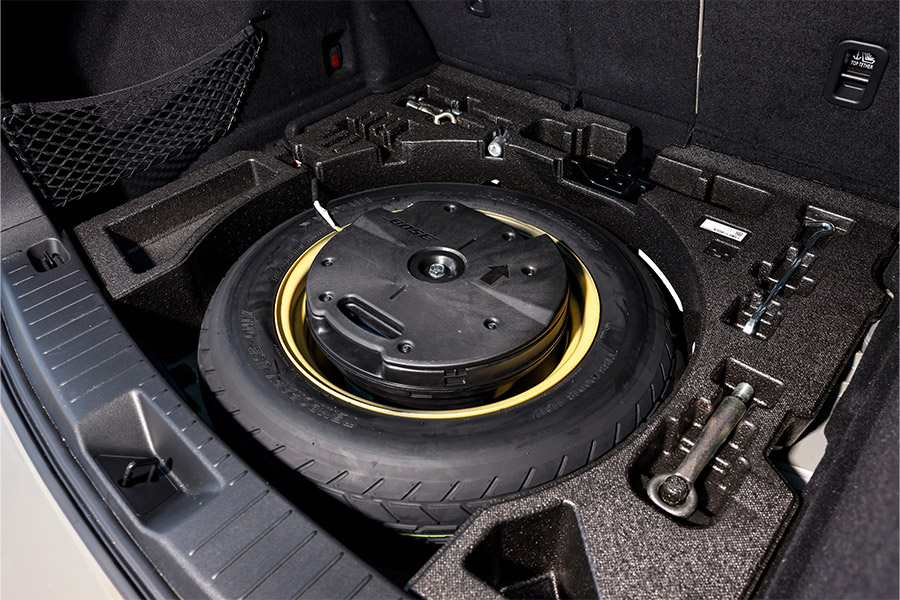
Standard equipment across all CX-60 grades are LED headlights and taillights, daytime running lights, keyless entry and start, dual-zone climate control, auto-dimming rear view mirror, front and rear parking sensors, and powered external mirrors.
To maintain a lower starting price, entry grades of the CX-60 do forego some niceties, including electric front seat adjustment, an electric tailgate, and wireless phone charging.
On the infotainment front there’s Apple CarPlay and Android Auto, sat-nav, digital radio, and USB-C ports spread across both rows of seating, plus a 150-watt AC outlet in the second row. Higher grades get dual 12.3-inch screens while lower grades make do with smaller displays offering less functionality.
The CX-60 line-up is backed by Mazda’s five-year/unlimited kilometre warranty. Servicing intervals are spaced every 12 months or 15,000km, but the servicing itself isn’t cheap. According to Mazda, five years’ of servicing the base CX-60 inline six will set buyers back $3469 – which is well and truly luxury territory.
All grades are fitted standard with a temporary space saver steel tyre.
The CX-60 retains a five-star ANCAP safety rating awarded to its predecessor under 2022 protocols.
Standard safety equipment across all grades comprises blind spot monitoring, autonomous emergency braking with pedestrian detection, cyclist and intersection detection, driver attention alert, emergency lane keeping and emergency lane assistance, and rear cross-traffic alert.
All models also get automatic high beam function, a full suite of eight airbags, and an overhead 360-degree camera.
Once again, in order to achieve the Pure grade’s sticker price, Mazda has omitted items such as adaptive cruise control, driver monitoring, front cross traffic alert, and a see-through camera function, which provides a virtual image of the front and rear corners of the car.
Most of the Mazda’s safety suite is tuned in a manner that won’t drive you up the wall. The Pure’s omission of driver monitoring makes it the most benign of the bunch.
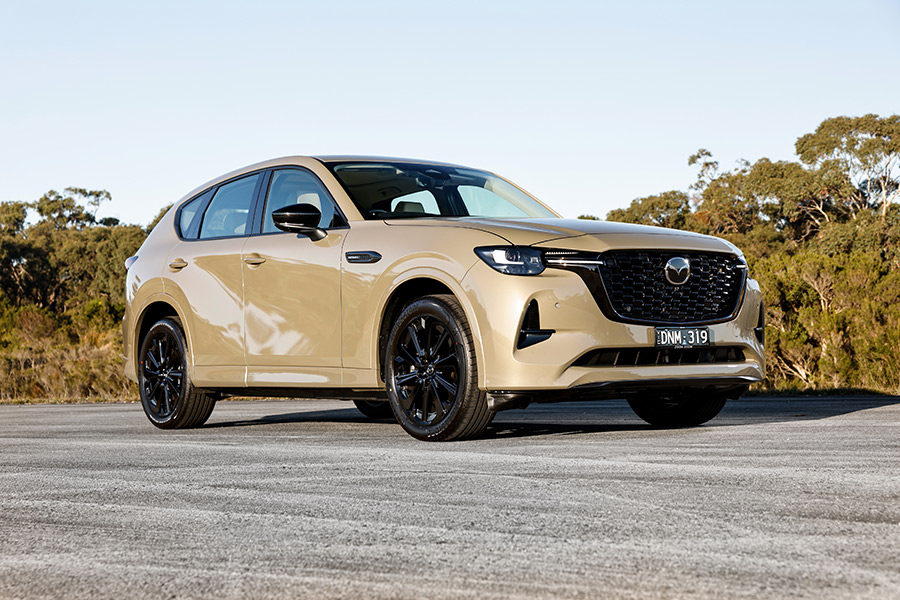
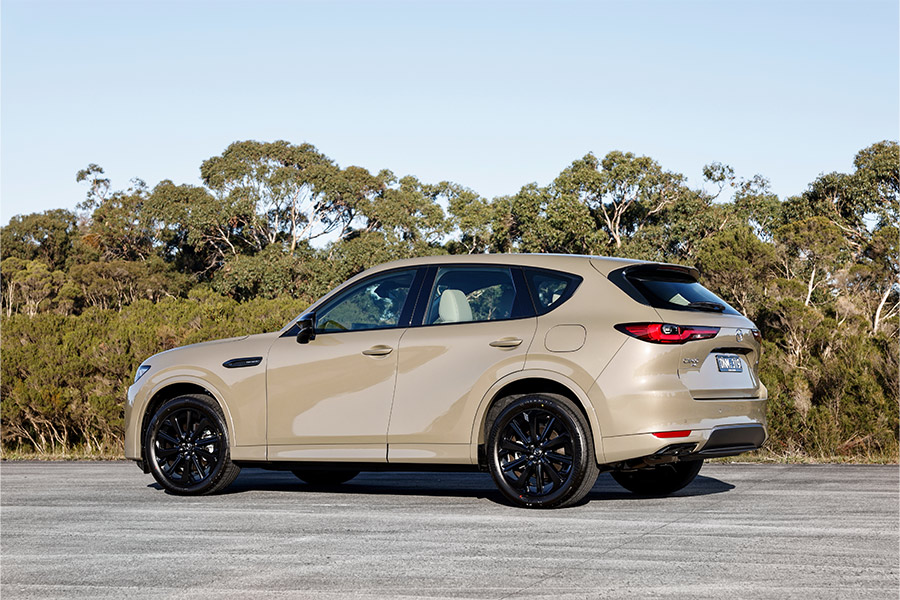
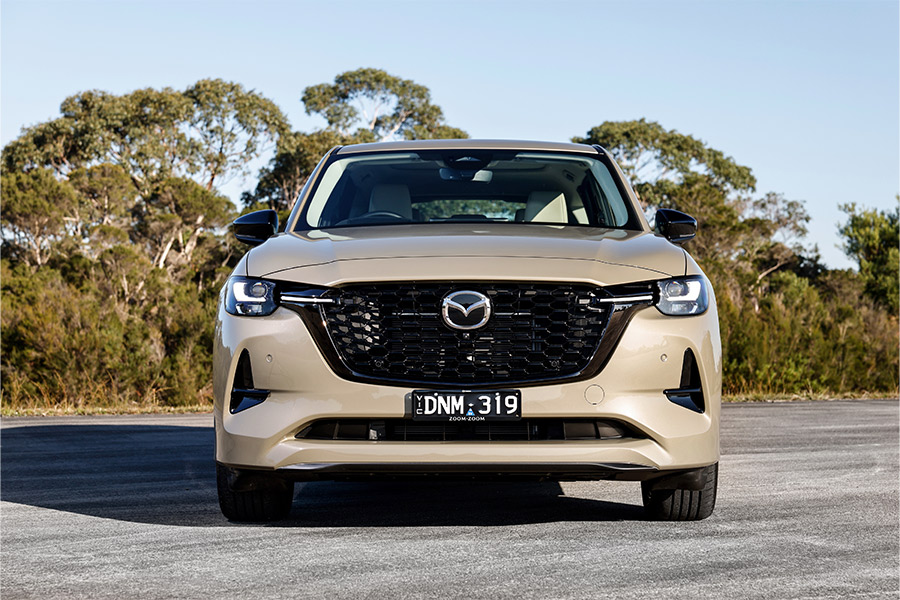
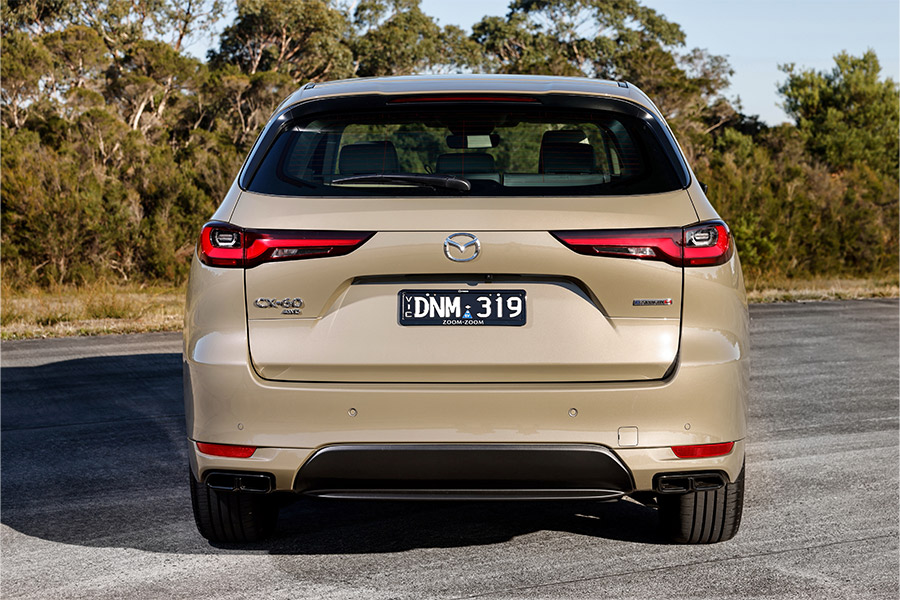
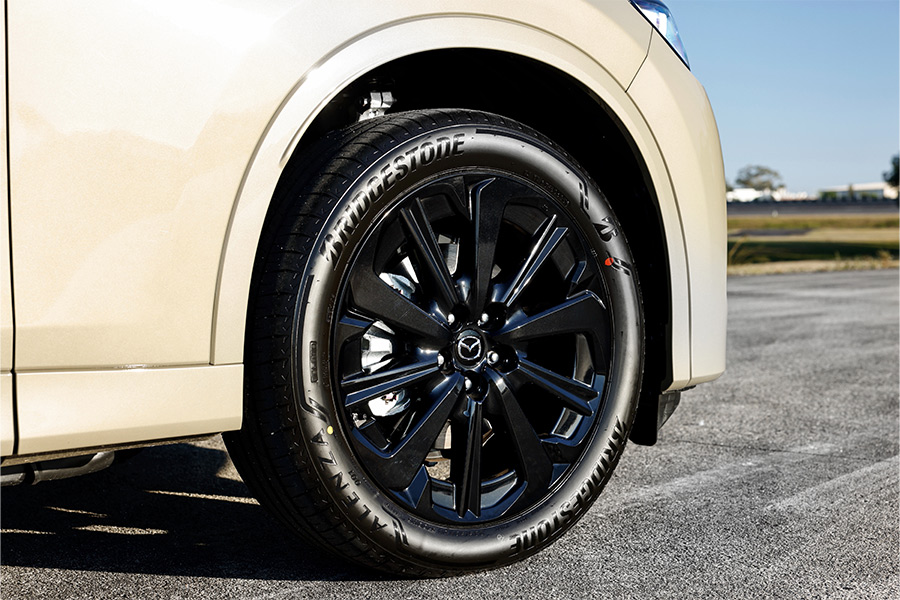
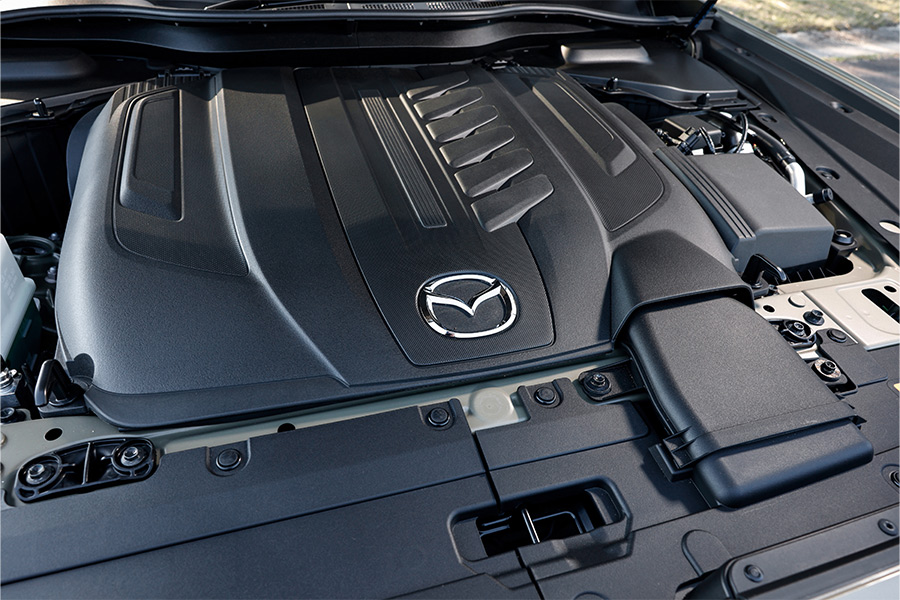
The CX-60 is offered with a choice of three unchanged powertrains for 2025, with a fourth in the pipeline.
The entry engine is a 3.3-litre in-line six-cylinder petrol outputting 209kW/450Nm, while a 187kW/550Nm 3.3-litre in-line six-cylinder turbo diesel occupies the middle ground. Both are fitted with mild-hybrid technology.
At the top of the tree is the 2.5-litre e-Skyactiv plug-in hybrid powertrain, outputting 241kW/500Nm. The PHEV offers a claimed electric range of 76km and a combined fuel consumption of 2.1L/100km – well clear of the petrol (7.4L/100km) and the diesel (5.0L/100km) on paper.
Towing capacity is rated at 2500kg braked for both six-cylinder models, and 2000kg braked for the PHEV.
Mazda also plans to introduce a 2.5-litre turbo-petrol four-cylinder engine that will purportedly lower the entry price to less than $50,000.
An eight-speed gearbox is shared across all variants, utilising a polarising multi-plate clutch design in place of a torque converter.
Likewise, all variants of CX-60 are underpinned by revised double wishbone front suspension and a multi-link rear design that has had its rear stabiliser bar removed. Mazda says the power steering tune has been amended for 2025, with the car’s electronic and all-wheel drive systems also reconfigured.
Mazda has made some important in-roads with the ride and handling mix on the updated CX-60, but the truth is it could still be better.
Pulling away from the carpark at this month’s national launch revealed the CX-60 is still beset with a heavier-than-ideal steering weight during walking speed scenarios, while the ride is afflicted with an ever-present jiggle on broken bitumen, together with harsher reactions to sharper imperfections.
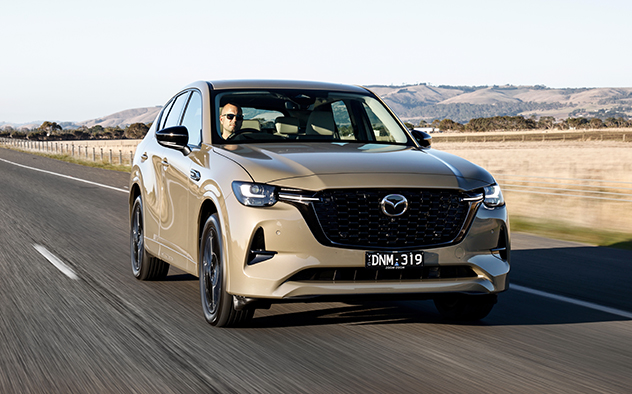
There are, however, tangible improvements to cabin acoustics and unwanted steering wheel feedback. Back-to-back comparisons with the predecessor CX-60 reveal greater control over smaller and larger amplitude bumps alike, greater suppression from outside noise, and a smoother driveline experience.
The upshot of that is an SUV that feels slightly more rounded in its day-to-day conveyance, and more civilised in headier driving.
That said, there is still some abruptness evident from the driveline upon acceleration and deceleration, and the occasional misstep from the suspension, particularly with respect to initial bump compliance, which remains sharper than it needs to be.
While quieter than before, road noise is still quite persistent on coarse-chip surfaces.
These points can be glossed over in a sports car, but are less palatable in a family SUV.
Interestingly, of all the grades the grades tested at launch, it is the base Pure, fitted with thicker-walled 18-inch wheel and tyre package, that demonstrates the best on-road acumen.
The prodigious diesel in-line six remains the standout engine: it’s vastly more efficient than the petrol six-cylinder on test (5.7L/100km vs 11.2L/100km in a mix of conditions) and offers superior pulling power against both the petrol six and the PHEV. All offer excellent confidence and roadholding, with all-wheel drive and quick-witted electronics.
The Mazda CX-60 is more appealing on-road and, with the advent of a more affordable entry price, looms as a sharper offering than before.
Ultimately, the changes for 2025 should help broaden the appeal of Mazda’s mid-size SUV.
Some of the carryover legacy issues notwithstanding, it’s clear Mazda has listened to its customer base. The bigger test is whether they will listen back.